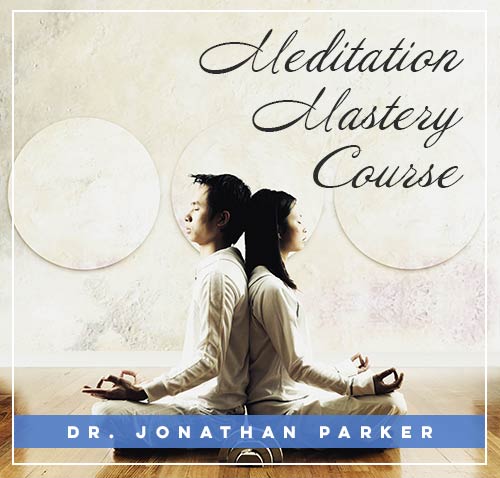Guiding the Future: Teaching Children Meditation

Hey there, amazing readers! 🖐️ Just a quick note: yes, we know there are a lot of ads here. Trust us, we get it—it’s not the prettiest look, but they help us keep this blog alive and kicking. Those pesky little ads cover the costs of all the behind-the-scenes magic, from hosting and tech stuff to creating content we hope you’ll love.
We’re committed to delivering quality posts, and your support (even just sticking around despite the ads) means everything to us. So, bear with us, and thanks for helping us keep the good vibes rolling. Now, on to the fun stuff! 😉
TRANSLATE BUTTON AT THE END OF THE ARTICLE
Overview
Teaching children meditation is an invaluable tool for their overall well-being and development.
Meditation offers numerous benefits for children’s mental health, including improved focus, reduced stress and anxiety, enhanced emotional regulation, and increased self-awareness.
By introducing meditation at an early age, parents and educators can equip children with essential skills to navigate the challenges of life and cultivate a sense of inner peace.
This article explores the importance of teaching children meditation, delves into the scientific research behind its benefits, provides practical tips for introducing meditation to kids, and addresses challenges that may arise.
Additionally, it highlights how meditation helps build resilience and emotional intelligence, empowering children with mindfulness skills they can carry into adulthood.
The Importance of Teaching Children Meditation
In today’s fast-paced world, where children are constantly bombarded with stimuli and faced with various pressures, teaching them meditation can be transformative.
Meditation helps children develop skills to cope with stress and build resilience.
It offers them a safe space to pause, reflect, and find calm in the midst of chaos.
By teaching children meditation, we empower them with tools to navigate their emotions, find inner peace, and build a stronger connection with themselves and others.
How Meditation Can Benefit Children’s Mental Health
Meditation has been found to provide numerous mental health benefits for children.
Research suggests that regular meditation practice can improve focus and attention span, enhance self-regulation, and reduce symptoms of anxiety and depression.
It also promotes emotional well-being by helping children develop emotional intelligence and fostering a positive outlook on life.
Additionally, meditation encourages empathy and compassion towards oneself and others, fostering healthier relationships and a sense of interconnectedness.
Exploring the Science Behind Children’s Meditation
Scientific studies have shed light on the positive effects of meditation on children’s brain development and mental health.
MRI scans have shown that regular meditation practice can lead to structural changes in the brain, particularly in areas associated with attention, emotional regulation, and empathy.
Moreover, meditation has been found to reduce the size of the amygdala, the part of the brain responsible for the fight-or-flight response, resulting in decreased anxiety and stress levels.
These findings highlight the potential of meditation as a powerful tool for children’s mental well-being.
Practical Tips for Introducing Meditation to Kids
Introducing meditation to children can be a joyful and rewarding experience.
Here are some practical tips to help get started:
Lead by example: Show children the importance of meditation by practicing it yourself regularly.
Keep it simple: Start with short sessions and gradually increase the duration as children become more comfortable.
Make it fun: Incorporate playful elements like visualizations, guided imagery, or storytelling to engage children in the practice.
Create a routine: Establish a dedicated time and space for meditation to make it a regular part of their day.
Be patient and flexible: Understand that children may find it challenging to sit still initially.
Give them space to explore different techniques and find what works best for them.
Creating a Peaceful Environment for Children’s Meditation
Creating a serene and inviting environment can enhance the meditation experience for children.
Here are some key aspects to consider:
Choose a quiet space: Find a peaceful corner in your home or classroom where children can meditate undisturbed.
Remove distractions: Ensure the space is free from clutter, technology, and other distractions that may hinder focus.
Set the mood: Use soft lighting, pleasant scents, and calming music to create a soothing atmosphere.
Provide comfortable seating: Offer cushions, mats, or chairs to support children’s posture and relaxation during meditation.
Encourage personalization: Allow children to decorate their meditation space with items that bring them joy and tranquility.
Age-Appropriate Meditation Techniques for Children
Different age groups require tailored meditation techniques to suit their developmental stages.
Here are some age-appropriate techniques:
Preschoolers (3-5 years): Simple guided visualizations using imagery of nature or animals can capture their imagination.
Elementary schoolers (6-12 years): Focus on activities that engage their senses, such as mindful eating or mindful walking.
Teenagers (13+ years): Introduce more advanced techniques like breath awareness, body scans, or loving-kindness meditation.
Addressing Challenges in Teaching Kids to Meditate
Teaching meditation to children may present certain challenges.
Here’s how to address them:
Restlessness: Encourage movement-based meditation techniques like walking meditation or yoga to accommodate their energy levels.
Short attention spans: Keep sessions short and engaging, gradually increasing the duration as their attention span improves.
Resistance: Explain the benefits of meditation using age-appropriate language and encourage open communication to address any concerns or misconceptions.
Peer pressure: Reinforce the importance of individuality and self-care, emphasizing that meditation is a personal practice and not a competition.
Building Resilience and Emotional Intelligence through Meditation
Meditation serves as a powerful tool for building resilience and emotional intelligence.
By teaching children to be aware of their emotions and thoughts without judgment, meditation helps them develop an inner strength to face challenges with composure and adaptability.
Regular practice also cultivates empathy, compassion, and self-compassion, allowing children to understand and regulate their emotions more effectively.
These skills, in turn, support healthy relationships, conflict resolution, and overall emotional well-being.
Empowering Children with Mindfulness: Teaching Meditation Skills
Teaching children meditation empowers them with mindfulness skills they can carry into adulthood.
By cultivating present-moment awareness, children learn to respond rather than react impulsively, enhancing their decision-making abilities.
Meditation also helps develop a greater sense of self-awareness, enabling children to recognize and navigate their emotions in a healthy manner.
These skills become invaluable lifelong tools that children can rely on to cope with stress, enhance their well-being, and lead fulfilling lives.
Conclusion
Teaching children meditation is a transformative practice that offers numerous benefits for their mental health and overall well-being.
Through regular meditation, children can develop essential skills such as focus, resilience, emotional intelligence, and self-awareness.
By introducing meditation at an early age, parents and educators are equipping children with tools to navigate the challenges of life and cultivate a sense of inner peace.
As the scientific research shows, meditation has a profound impact on children’s brain development, reducing stress and anxiety while promoting emotional well-being.
By creating a peaceful environment, using age-appropriate techniques, and addressing challenges that may arise, we can guide children towards a future filled with mindfulness, resilience, and a deep connection with themselves and the world around them.

The Enlightenment Journey is a remarkable collection of writings authored by a distinguished group of experts in the fields of spirituality, new age, and esoteric knowledge.
This anthology features a diverse assembly of well-experienced authors who bring their profound insights and credible perspectives to the forefront.
Each contributor possesses a wealth of knowledge and wisdom, making them authorities in their respective domains.
Together, they offer readers a transformative journey into the realms of spiritual growth, self-discovery, and esoteric enlightenment.
The Enlightenment Journey is a testament to the collective expertise of these luminaries, providing readers with a rich tapestry of ideas and information to illuminate their spiritual path.
Our Diverse Expertise 🌟
While our primary focus is on spirituality and esotericism, we are equally passionate about exploring a wide range of other topics and niches 🌍📚. Our experienced team is dedicated to delivering high-quality, informative content across various subjects ✨.
To ensure we provide the most accurate and valuable insights, we collaborate with trusted experts in their respective domains 🧑🏫👩🏫. This allows us to offer well-rounded perspectives and knowledge to our readers.
Our blog originally focused on spirituality and metaphysics, but we’ve since expanded to cover a wide range of niches. Don’t worry—we continue to publish a lot of articles on spirituality! Frequently visit our blog to explore our diverse content and stay tuned for more insightful reads.








